The surprising reasons why your favourite foods were invented
Food for thought
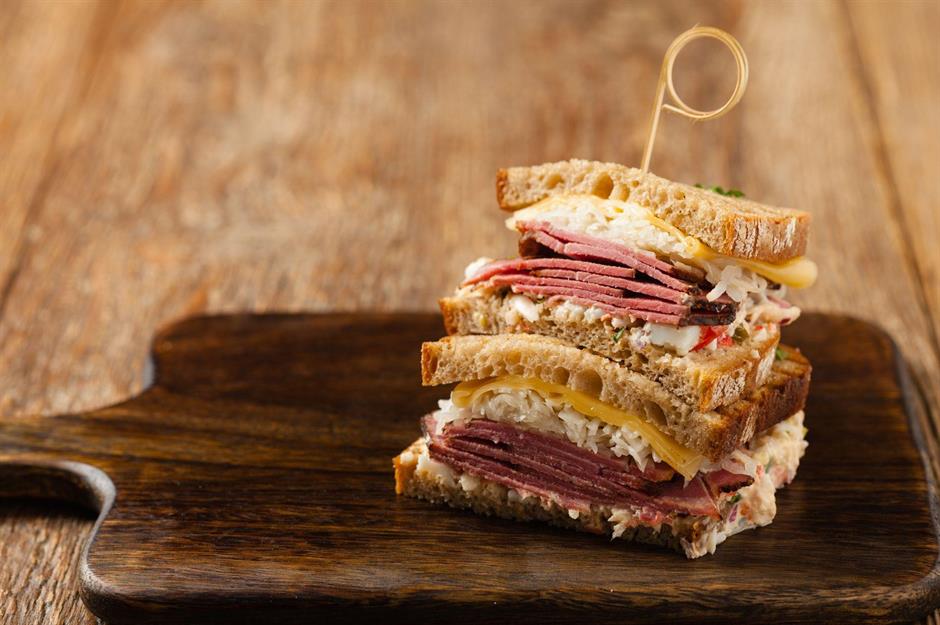
Ever munched through a bag of cheese puffs or a bowl of corn flakes and wondered, "How was this even invented?" Well, the truth is that some dishes have rather unusual origin stories, involving everything from happy accidents to failed attempts at revenge. Read on to discover how 37 seemingly simple everyday food staples came to be.
Click or scroll through our gallery to discover the surprising reasons why your favourite foods were invented – counting down to the most legendary backstory of all.
37. Fettuccine Alfredo
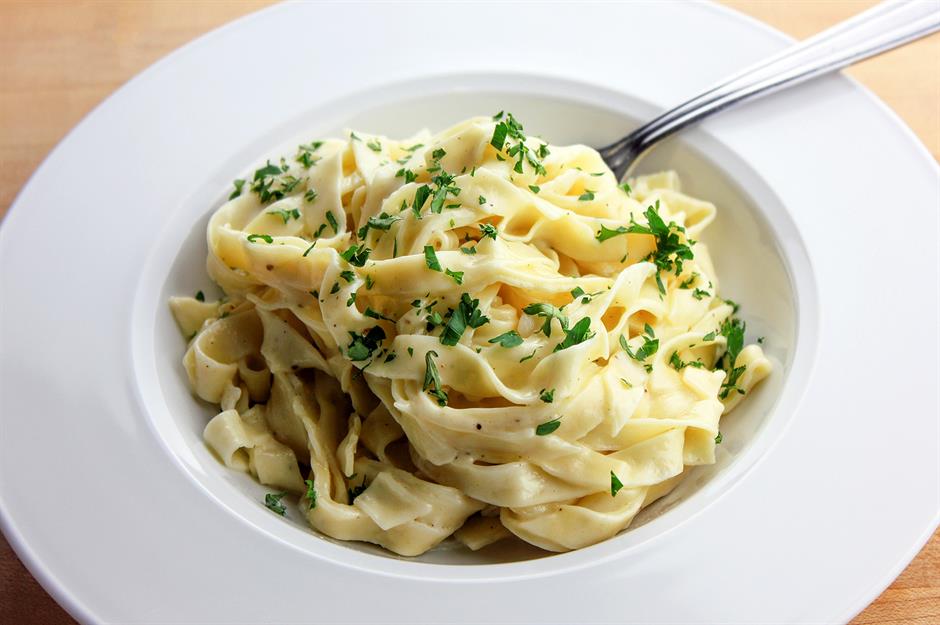
Chef Alfredo Di Lelio created and popularised fettuccine Alfredo in Italy in 1908. Di Lelio's wife was feeling out of sorts after giving birth to their son, so he whipped up a pasta dish with Parmesan and butter to boost her spirits. Pasta bianco (or 'white pasta') is a pretty common Italian comfort food, but instead of making the classic version, he went big on the butter and creamed the sauce to create an all-new dish. Di Lelio later included fettuccine Alfredo on the menu at his restaurant, Alfredo alla Scrofa in Rome – and the spot still serves it today.
36. Ploughman’s lunch
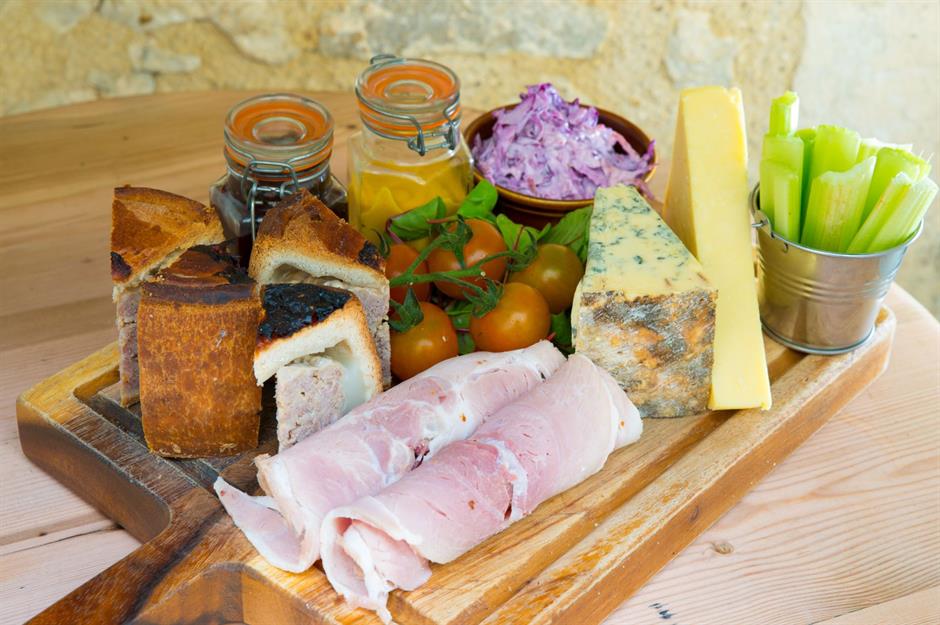
A British pub menu mainstay, the ploughman’s lunch features everything from hard cheeses and chutneys to fresh bread and cold meats. While it’s commonly associated with farmers, the modern version we enjoy today was likely created during the 1950s and popularised in the 1960s – all thanks to an advertising campaign launched by the UK's Milk Marketing Board in a bid to boost cheese sales.
35. Dunkin’ Munchkins

These bite-sized doughnut snacks come in a variety of flavours, from glazed chocolate to blueberry, and they first landed on Dunkin' menus in the early 1970s. Though they're undoubtedly delicious, they were invented as a clever way to use the excess dough cut from doughnut holes. Thankfully, the treats proved instantly popular, and they continue to be a customer favourite over five decades later.
34. Campbell’s SpaghettiOs
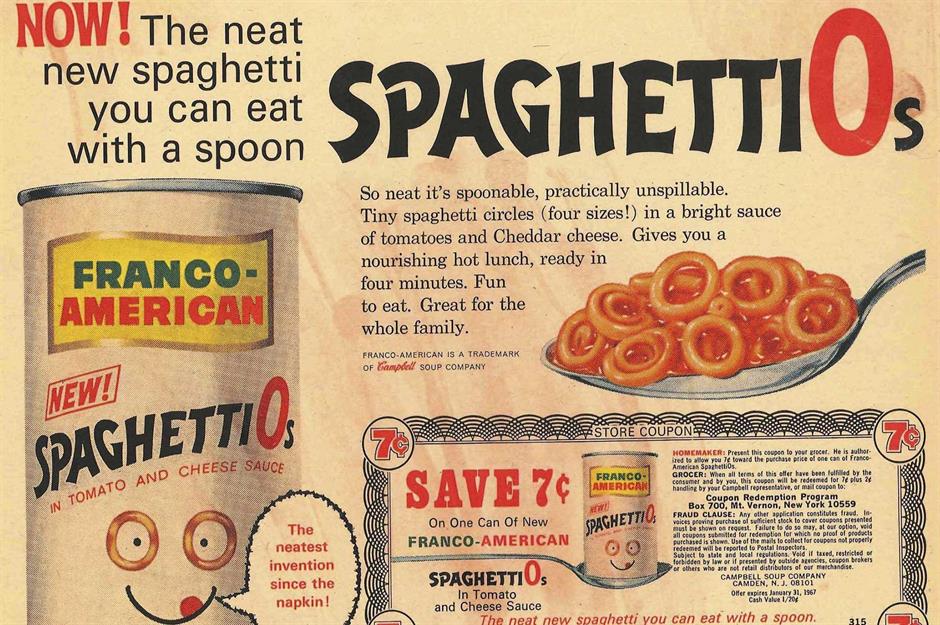
Now an American store-cupboard staple, this family-friendly product was invented in 1965, when Donald Goerke, who worked for Campbell's Franco-American brand, was challenged to create a pasta dish for children that could be eaten with a spoon. It took a lot of experimentation before Goerke eventually settled on the 'O' shape. Pictured is an early advertisement suggesting that SpaghettiOs are 'practically unspillable'.
33. Salisbury steak
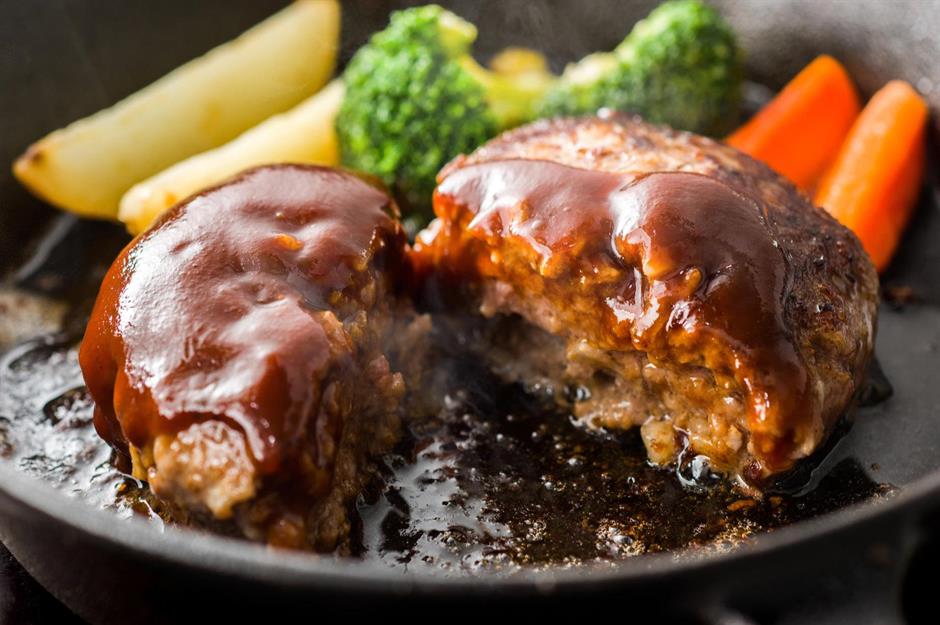
A popular cafeteria lunch and TV dinner throughout the 1970s, Salisbury steak consists of minced beef shaped into oblong patties, served up with a generous helping of thick gravy. Although it might not sound particularly healthy by today's standards, it was invented by American physician Dr Salisbury in 1888 as a low-carb food intended to improve digestion.
32. Chicken tikka masala
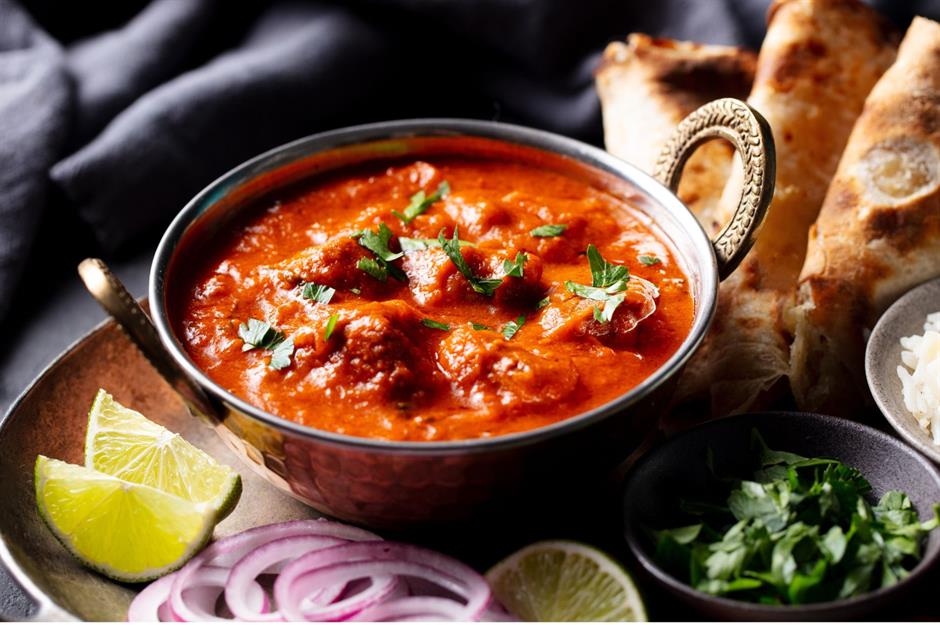
Few Indian restaurants in the UK don't have this 1970s favourite on the menu. While its origins are sometimes contested, many agree that Ali Ahmed Aslam was the dish's creator. The story goes that the Pakistani Scottish chef, of Glasgow’s Shish Mahal restaurant, invented the curry after a customer complained that the meat in his chicken tikka was too dry. Annoyed by this, the chef added a can of tomato soup, yogurt and extra spices. Surprisingly, the customer loved it, and the dish quickly became a British classic.
31. Aspartame
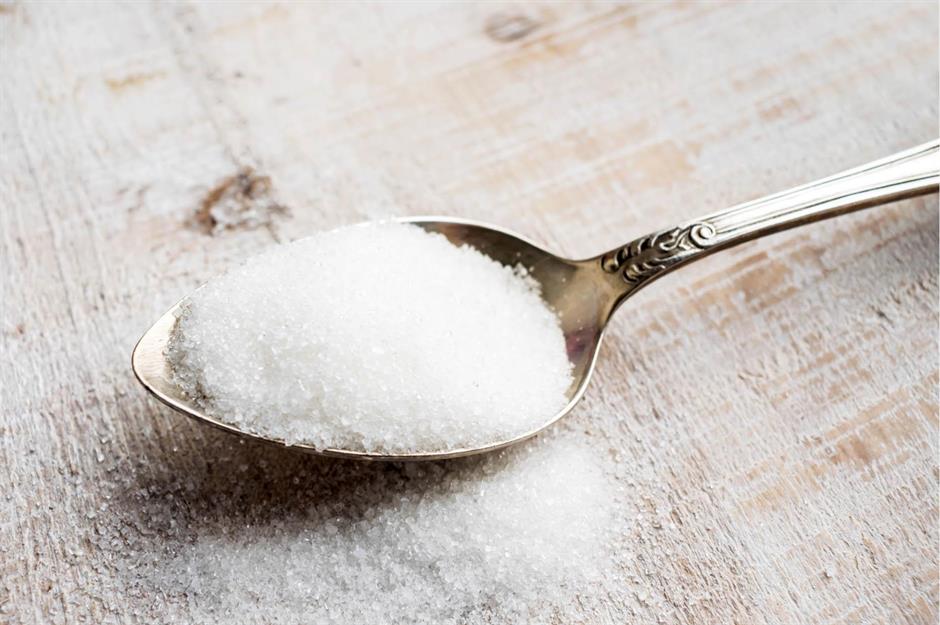
Found in products such as Diet Coke, this artificial sweetener was invented in 1965 by scientist Dr James Schlatter, who was trying to make an anti-ulcer drug. While experimenting, he licked his finger to pick up a piece of paper and discovered it tasted sweet – and the sugar replacement was born. It's likely one of the only times that accidentally ingesting a chemical in science has led to a positive outcome.
30. McDonald's Filet-O-Fish
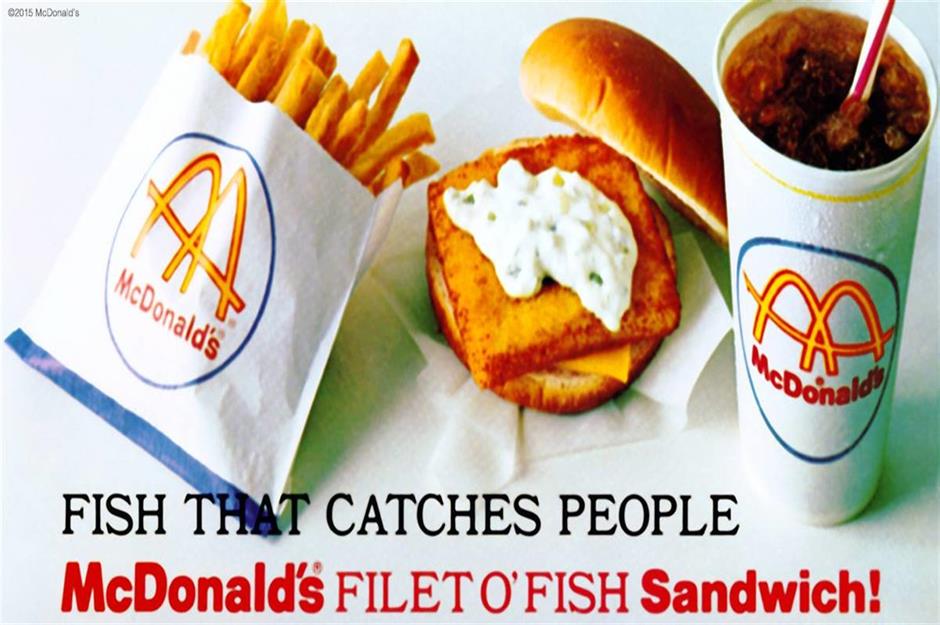
Known to divide a crowd, this controversial McDonald's menu item arrived in 1965 as part of a strategy to elevate sales on Fridays, when Roman Catholics traditionally abstain from eating meat. Christened the Filet-O-Fish, the tasty sandwich, complete with breadcrumbed fish, tartare sauce and a slice of American cheese, was invented in 1962 by Lou Groen, a McDonald's franchise owner from Cincinnati. It was rolled out nationally two years later, and it's still on the menu today. Not only that, but its sales tend to skyrocket in March because of Lent, another period of Catholic abstinence.
29. Mozzarella
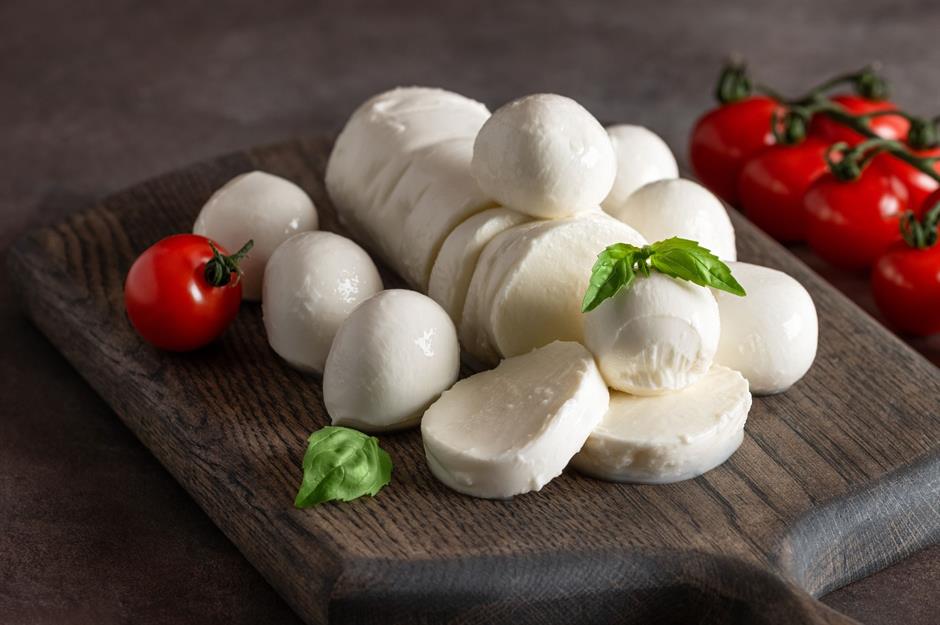
This creamy Italian delicacy may be ubiquitous these days, but spare a thought for its surprising origin story. It’s believed that mozzarella was accidentally created when curdled milk fell into a pan of boiling water at a cheese factory in Naples. We’re certainly thankful for its invention – after all, what would a pizza or a Caprese salad be without it? Nowadays, many types of mozzarella are made, using water buffalo milk and cows’ milk.
28. Chimichanga
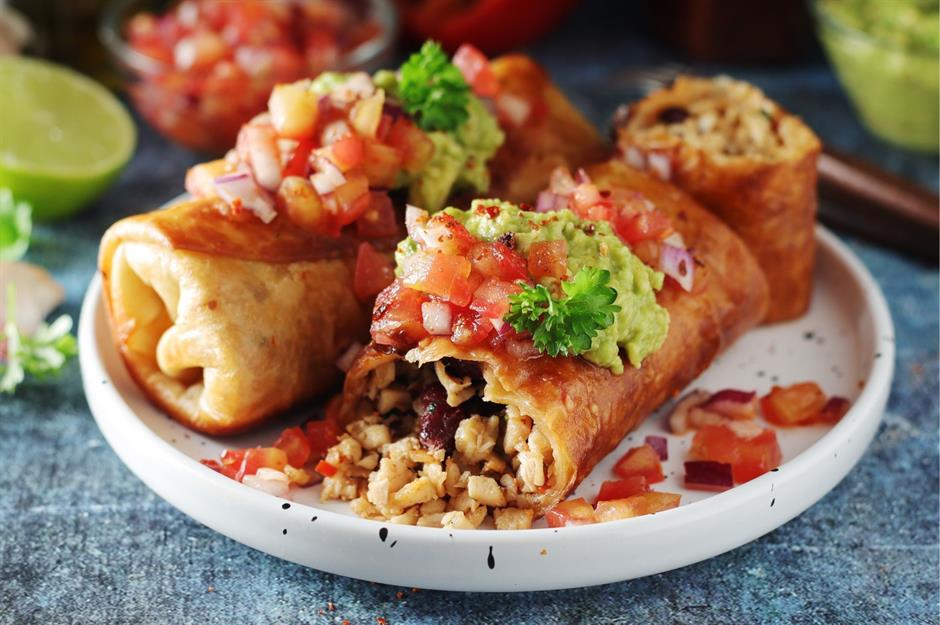
This crispy Tex-Mex delight was never supposed to exist. It’s believed that the chimichanga was created by accident after Monica Flin, owner of El Charro Café in Tuscon, Arizona, dropped a burrito into a pot of hot oil. As the oil splashed up, she went to swear – but as young children were around, she cried out ‘chimichanga!’ instead.
27. Twinkies
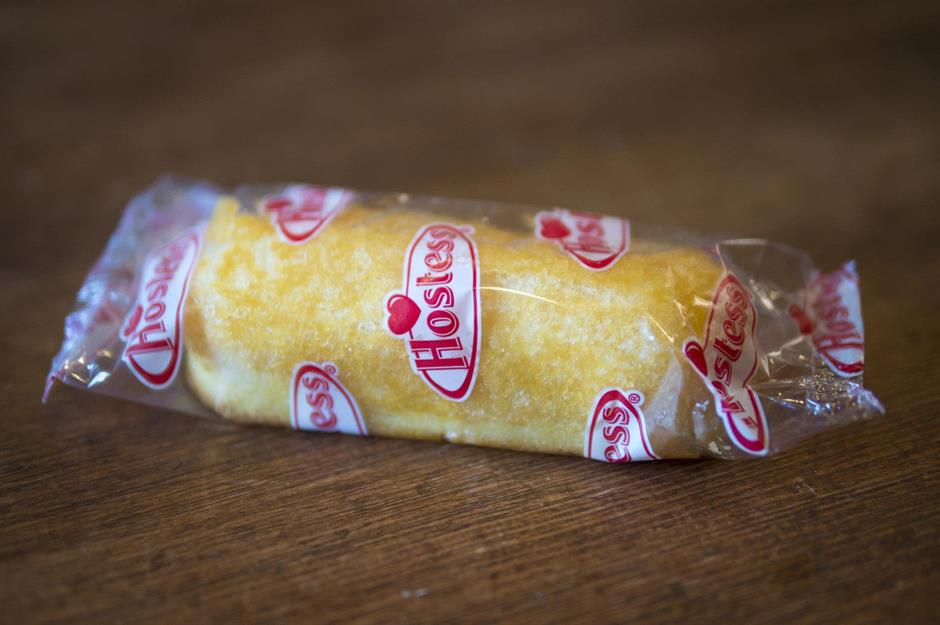
These fluffy golden cakes with a creamy filling were invented in 1930 to use Continental Baking Company's strawberry shortcake pans in the months after the strawberry season ended. It was the height of the Great Depression, and no machinery could afford to sit unused. Inspired by an advertisement for Twinkle Toe Shoes, the treat was initially filled with banana crème; it earned the vanilla centre we all know and love due to rationing during World War II.
26. Sushi
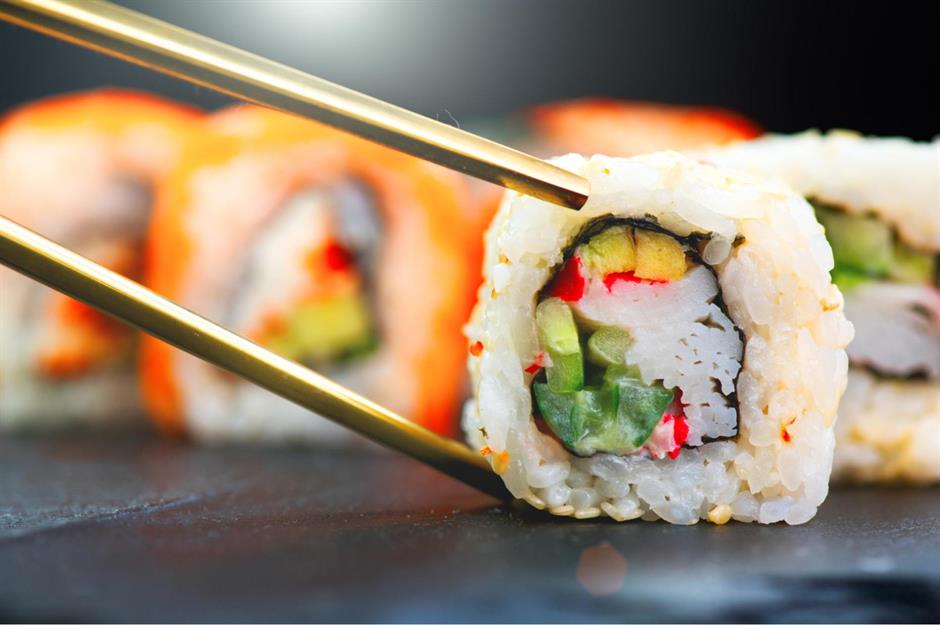
From maki rolls to stuffed inari, sushi is something you want to eat fresh. While you might associate the dish with Japan, it's believed that sushi was originally created in ancient China as a way of preserving fish by storing it in fermented rice. Back then, only the fish was consumed, while the rice was discarded. Eventually, fermented rice was replaced with the vinegared rice still used today.
25. Chocolate brownies
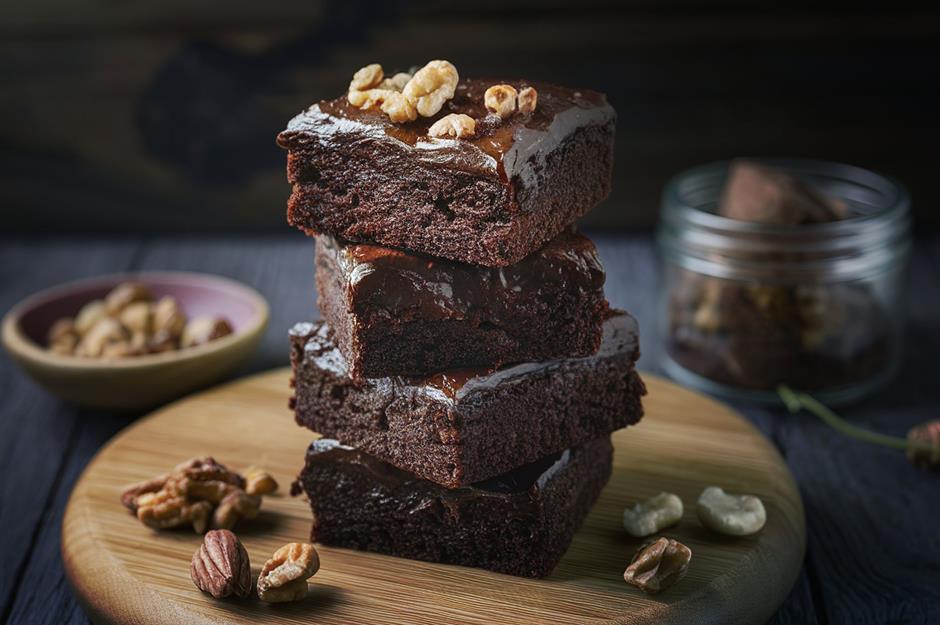
It’s hard to imagine a time before this gooey treat existed. Its origin stories are hotly debated, with some insisting that a housewife from Bangor, Maine accidentally invented it after a disastrous attempt to bake a regular chocolate cake. However, the Palmer House Hilton perhaps has the strongest claim on the brownie. It says Bertha Palmer oversaw its invention in 1893 for the Columbian Exposition World Fair – five years before any recipe appeared in print.
24. Raisins
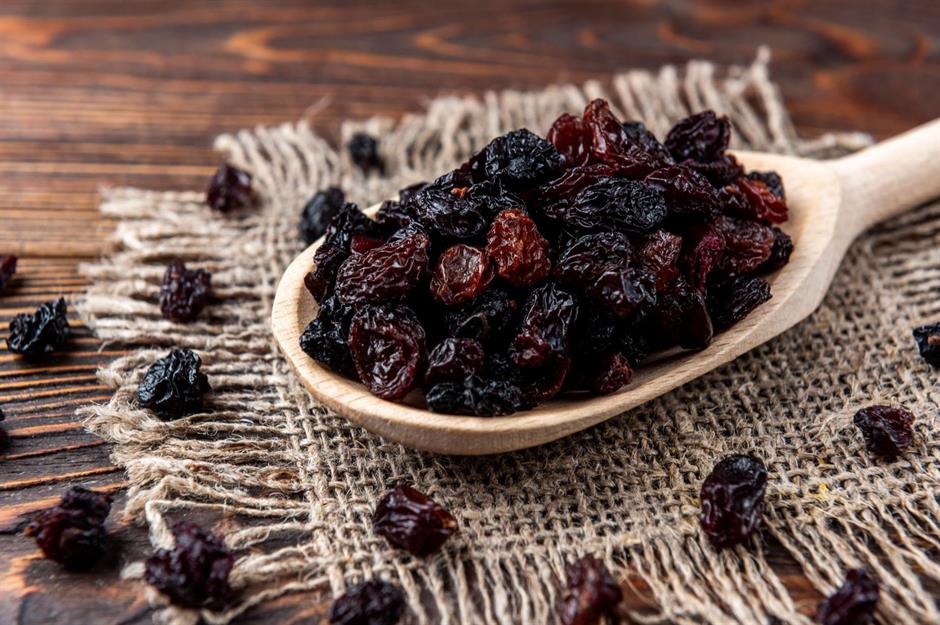
The humble raisin hasn't always been a road trip essential. When raisins were first dried on grape vines in Mediterranean Europe in 2000 BC, they were eaten and used for decoration in homes and shrines. Later, the dried fruit became popular as a prize at sporting events – and it was even thought to have medicinal properties.
23. Chocolate chip cookies
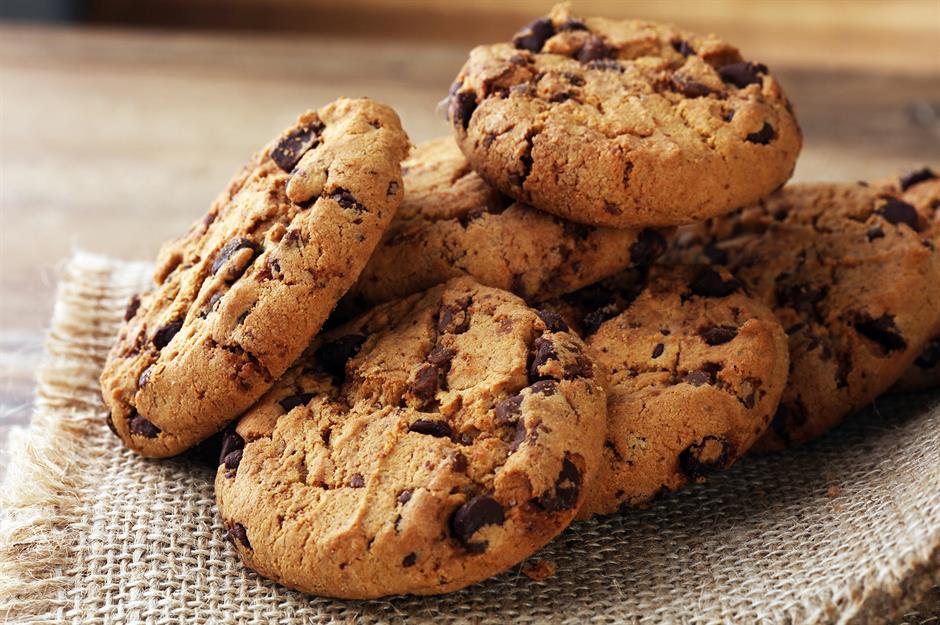
Many will try to convince you that Ruth Wakefield invented chocolate chip cookies in 1938 by mistake – but that wasn't the case. Wakefield, the owner of the Toll House Inn in Massachusetts, was actually trying to improve a recipe for butterscotch nut cookies, which were popular with visitors. Her idea was to add small pieces of chocolate, and it worked like a charm. Nestlé eventually bought the recipe from Wakefield (reportedly for a dollar and a lifetime's supply of chocolate), and the rest is delicious history.
22. Slurpees
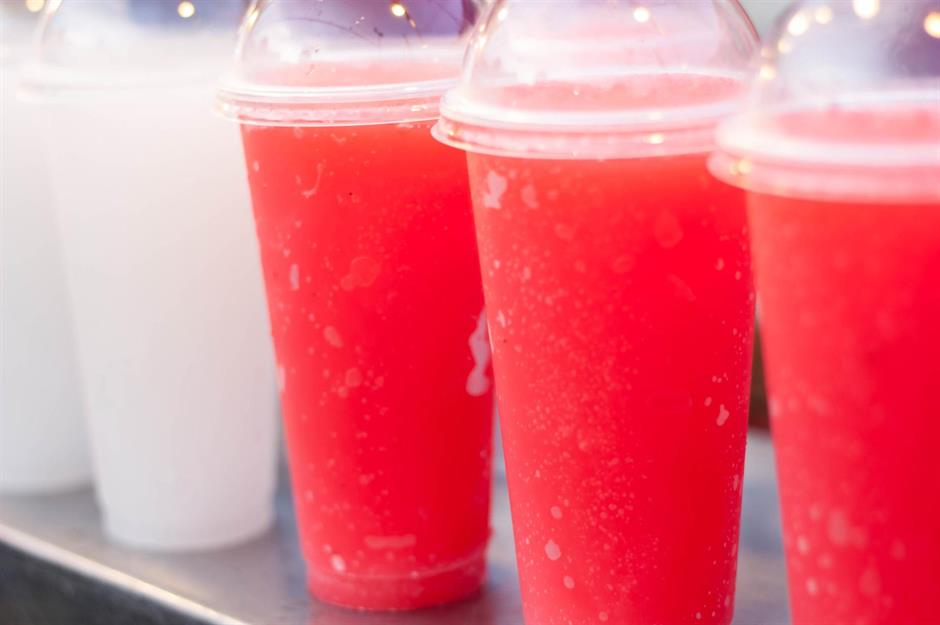
While many have enjoyed this American 7-Eleven staple, few know its cool history. The frozen drink – famed for its icy taste and bright colours – dates back to the 1950s, when Kansas shop owner Omar Knedlik's soda fountain broke down mid-shift. To keep his drinks cool, he stored them in a freezer and served them half-frozen instead. Customers adored them, coming back time and again to request 'those pops that were in a little bit longer'. Knedlik created a machine to produce the drinks, and in 1965, 7-Eleven licensed it.
21. Eggs Benedict
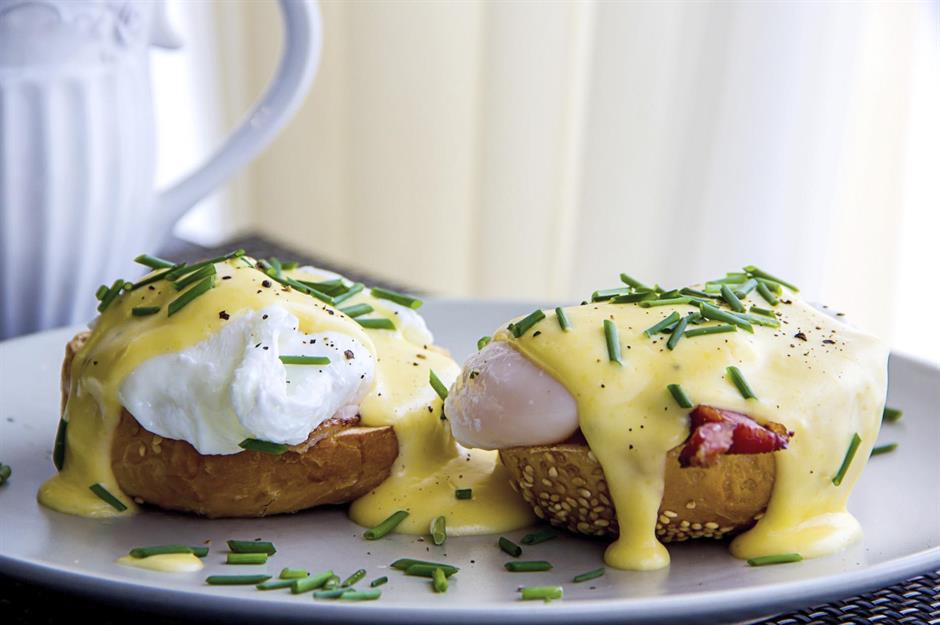
Some say chef Charles Ranhofer, of Manhattan’s Delmonico’s Restaurant, invented eggs Benedict in the 1860s when regular customer Mrs LeGrand Benedict requested a new and exciting dish. Others say it was born when a hungry (and hungover) Wall Street broker waltzed into NYC’s Waldorf Hotel in 1894 and ordered buttered toast, poached eggs, crisp bacon and Hollandaise. Apparently, the hotel's maître d'hôtel was so struck with the dish that he made a tweaked version a permanent fixture on the menu. Whichever story is true, we're grateful!
20. Liquorice Allsorts
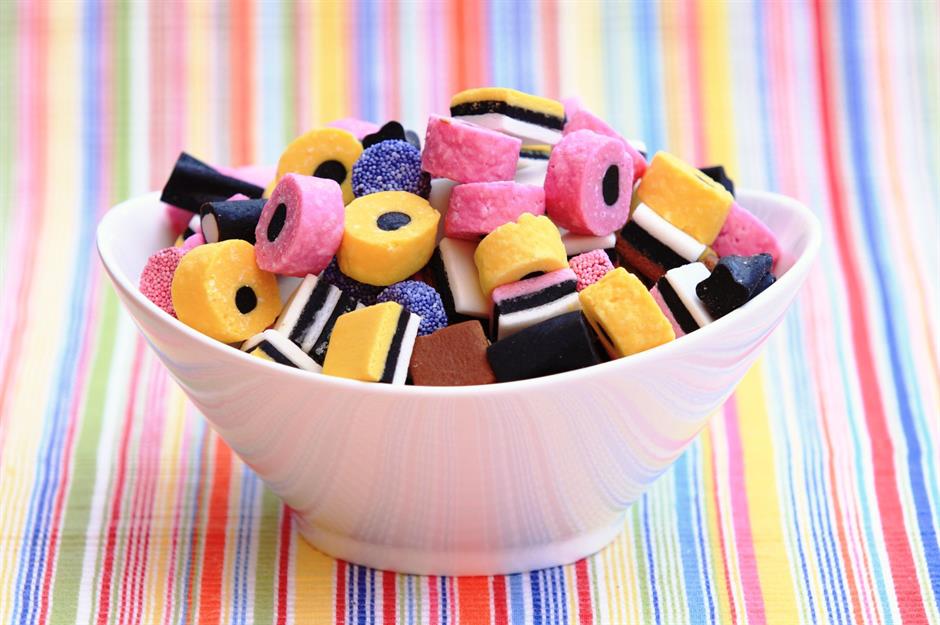
It’s believed that Bassett's Liquorice Allsorts, an old-school brand of British sweets, was invented by clumsy mistake. In 1899, company representative Charlie Thompson supposedly tripped and dropped a tray of sample sweets – creating a vibrant mix of colours and shapes. Fortunately, the wholesaler who saw the tray of mixed-up sweets was delighted and began ordering a mixed delivery every time. It wasn't long before the assorted treats became available on sweet shop shelves up and down the country.
19. Tarte Tatin
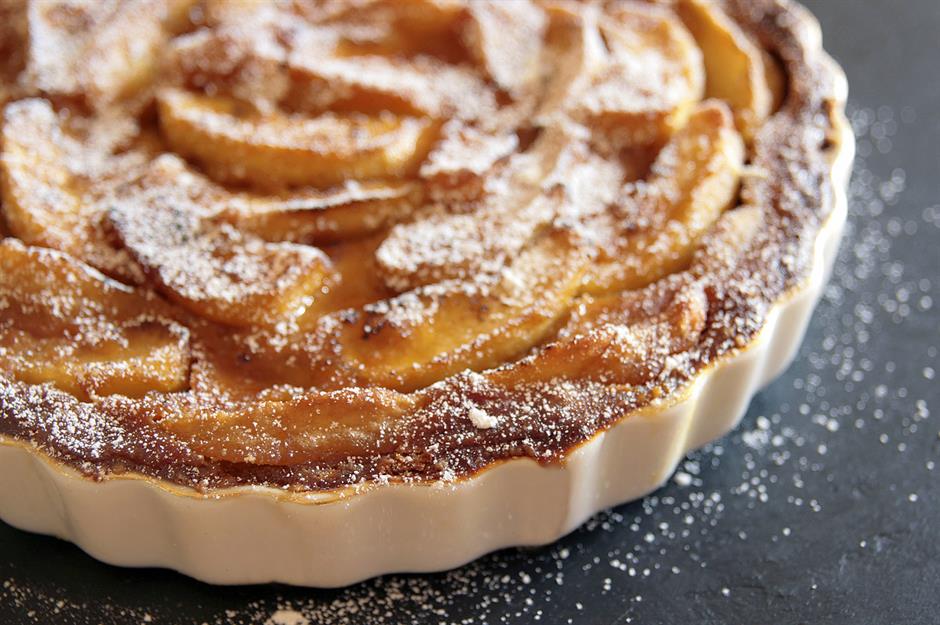
We may never know the real story of who invented Tarte Tatin – but the legend is so good, it's worthy of inclusion here. According to the popular tale, sisters Caroline and Stephanie Tatin (who ran the Hôtel Tatin in Lamotte-Beuvron, France) were overwhelmed one hectic day in the late 1800s. They were so busy that when Stephanie baked an apple pie, she forgot to put a pie crust on the bottom. However, instead of starting again, she stuck a pie crust on top of the apples, flipped it over and served it to her grateful guests. The pie became a sensation shortly afterwards.
18. Gin and tonic

Gin and tonic may be a fashionable drink these days, but that hasn't always been the case. The beverage is believed to date back to the 16th century when it was used for medicinal purposes. Over the years, gin and tonic has been used to fight multiple diseases, including malaria. The quinine (a medicinal extract) in the tonic stopped fever chills, while the gin (made from juniper berries) made the tonic more palatable. As a bonus, the lime wedge warded off scurvy.
17. Bagels
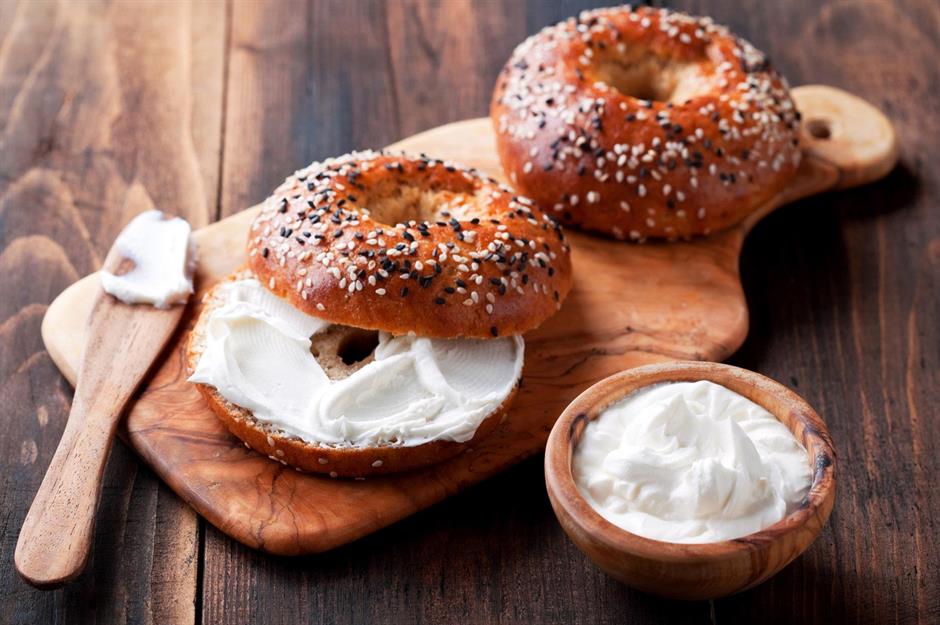
There are a few theories out there, but it's widely believed that these ring-shaped rolls originated in Poland in the 13th century. During this time, many laws were put in place to segregate Jews from Christians – but Jewish bakers were permitted to bake bread for both communities. Their bagels were particularly popular among Christians during Lent, when rich foods were traditionally avoided.
16. Buffalo wings
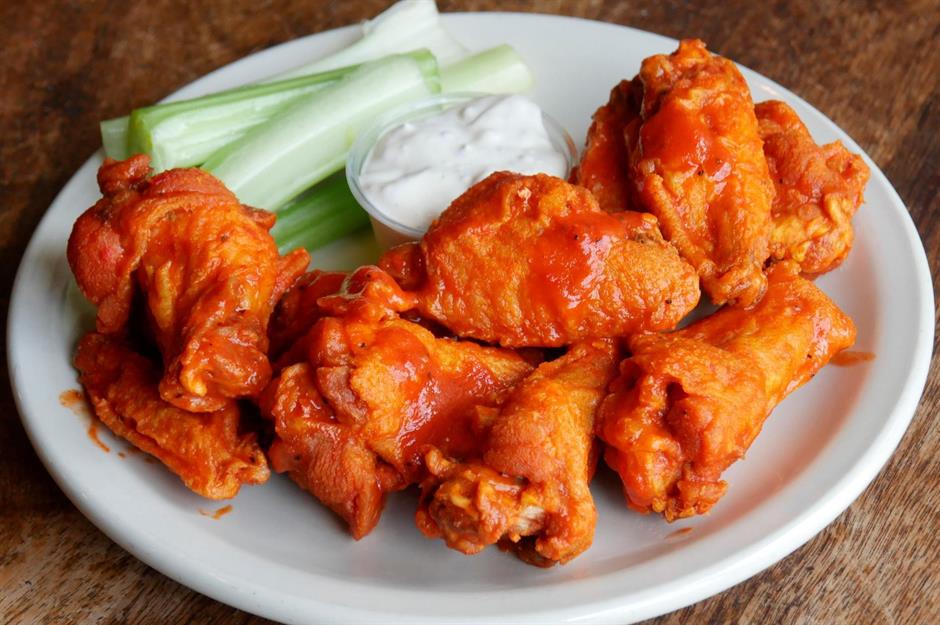
Sticky and spicy, Buffalo wings are among America's favourite comfort foods; each year, the country gets through billions of them during the Super Bowl weekend alone. However, the dish was initially invented to save a large batch of unwanted chicken wings from going to waste. The deep-fried snack, served with celery and blue cheese dip, was first prepared by Teressa Bellissimo at The Anchor Bar in Buffalo, New York, in 1964.
15. 7 Up
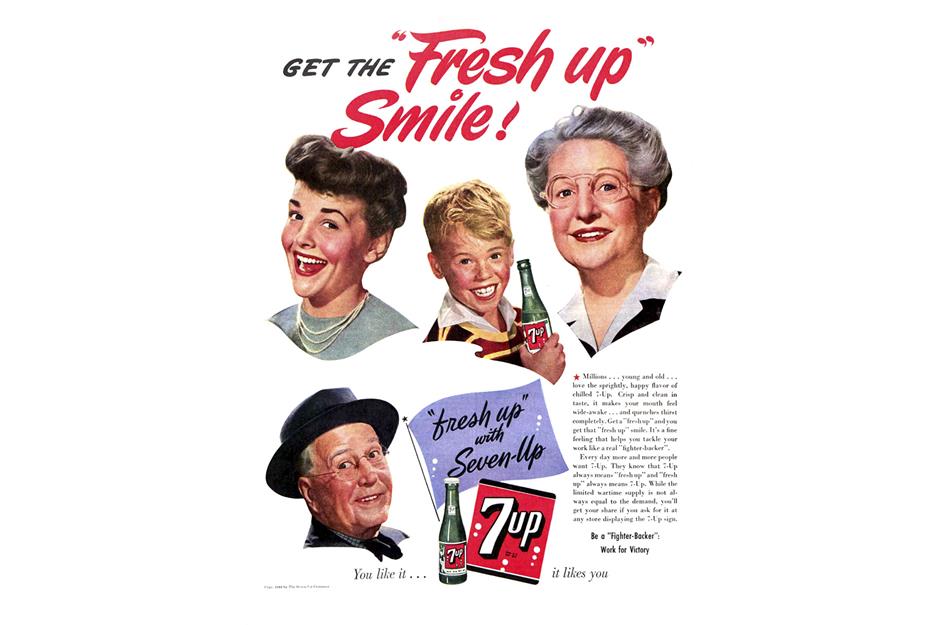
These days, this lemon and lime–flavoured fizzy drink is a popular alternative to Coca-Cola. But when 7 Up was invented in 1929, it contained the chemical lithium citrate – which is used to treat depression, bipolar disorder and mania – making it a mood enhancer as well as a refreshing drink. Thankfully, it no longer contains the unusual ingredient, and fans of the drink can enjoy it worry-free.
14. Blue cheese
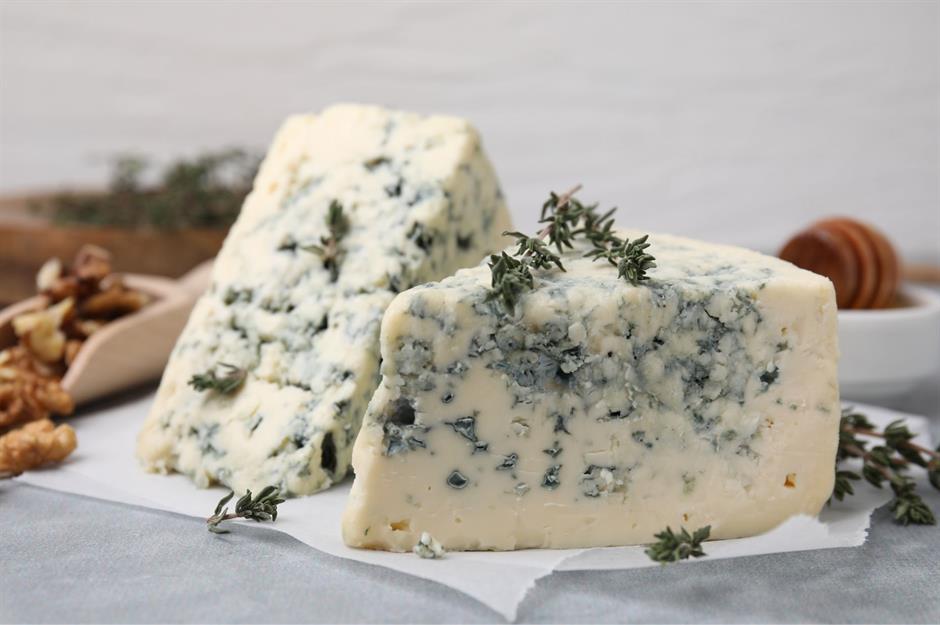
According to the legend, blue cheese was created after a shepherd left some half-eaten bread and cheese in a cave. A few months later, he returned – discovering that mould had developed on the bread and transferred onto the cheese, giving it a blue colour. Much to his surprise, he found the cheese to be rather pleasant. We're sure cheese lovers will be glad to know that this isn’t how blue cheese is made today.
13. Toasted ravioli
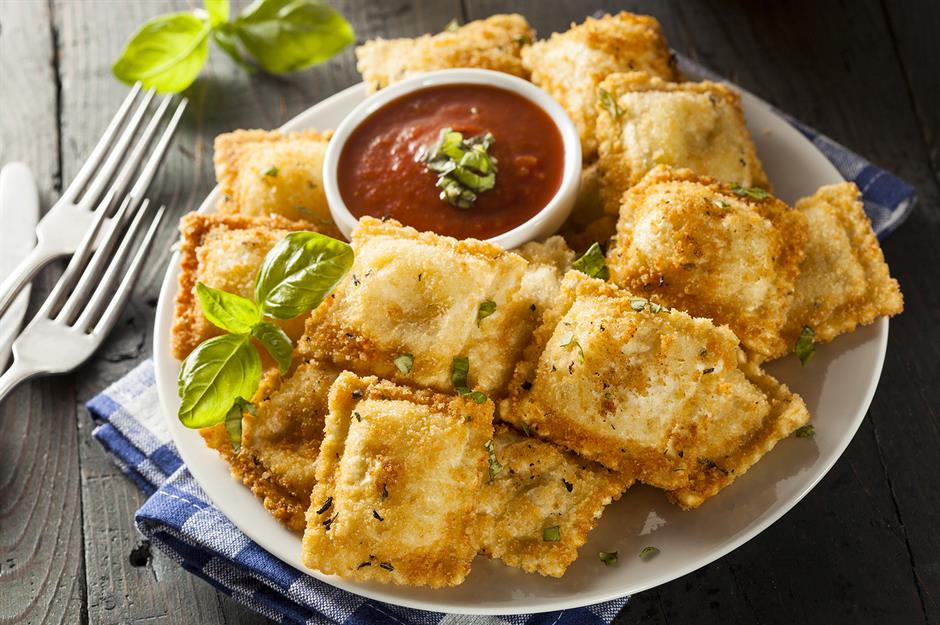
It's generally (although not universally) accepted that toasted ravioli was born at Mama's on the Hill in St. Louis, Missouri. In 1943, when the restaurant was called Oldani's, a cook accidentally dropped a single ravioli into hot oil instead of hot water. The cook pulled the ravioli out of the fryer, topped it with Parmesan and gave it a try. He liked what he tasted, and the dish swiftly made it onto the appetiser menu. Today, it's a quintessential St. Louis delicacy.
12. TV dinners
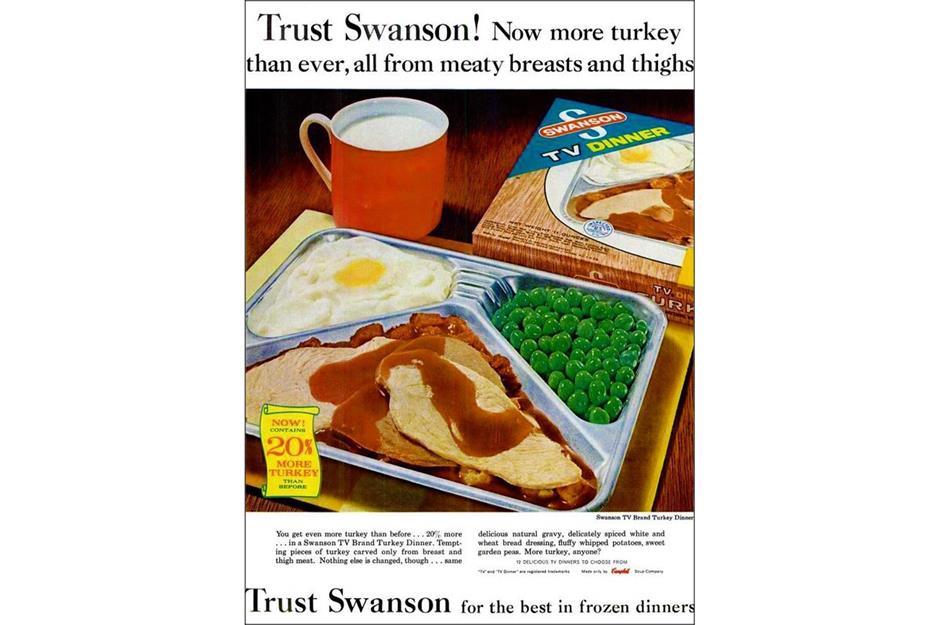
The TV dinner was invented to get rid of excess poultry – 520,000lbs of turkey, to be precise. After misjudging how much turkey it needed for Thanksgiving 1953, American frozen food brand Swanson Foods asked its staff to think of an innovative way to avoid wasting it. A ready meal designed to be eaten in front of the TV was just the ticket, and the three-part container even came slotted inside a box that looked like a television set.
11. Graham crackers
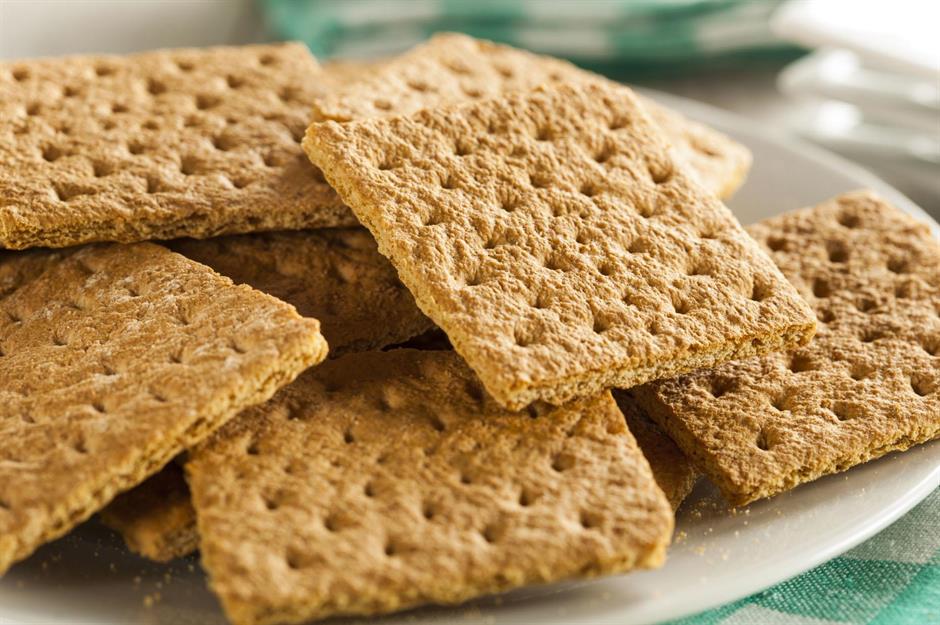
From s'mores to cheesecake bases, this unassuming cracker is used in recipes across the USA. But do you know what its original intended use was? Sylvester Graham, a puritanical 19th-century minister, believed that lustful feelings were to be suppressed – and that rich and delicious foods helped to stimulate these emotions. He therefore advised Americans to follow a strict vegetarian diet, featuring this plain grain-based biscuit, in order to conquer their desires.
10. Crêpes Suzette
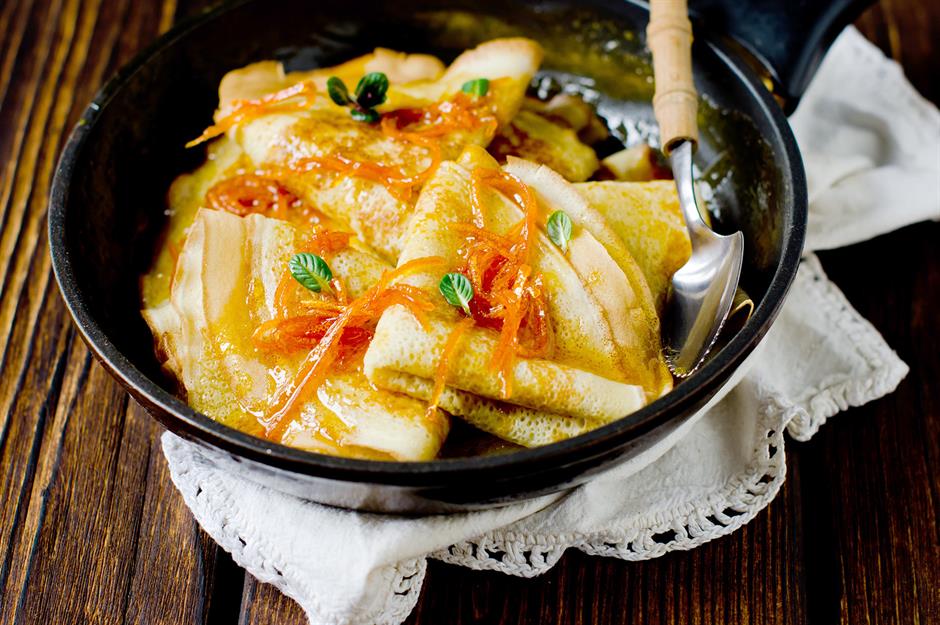
Legend has it that, in 1895, chef Henri Charpentier was waiting on the Prince of Wales – the future King Edward VII – at the Café de Paris in Monte Carlo when the prince ordered crêpes. Charpentier had to cook the dish at the table for the prince and his guests, including a young woman called Suzette. But when the orange sauce and liquors unexpectedly caught fire, Charpentier thought disaster had struck. Fortunately, the flambéed crêpes turned out to be delicious, and Charpentier and the prince named the new dish after Suzette.
9. Lea & Perrins Worcestershire
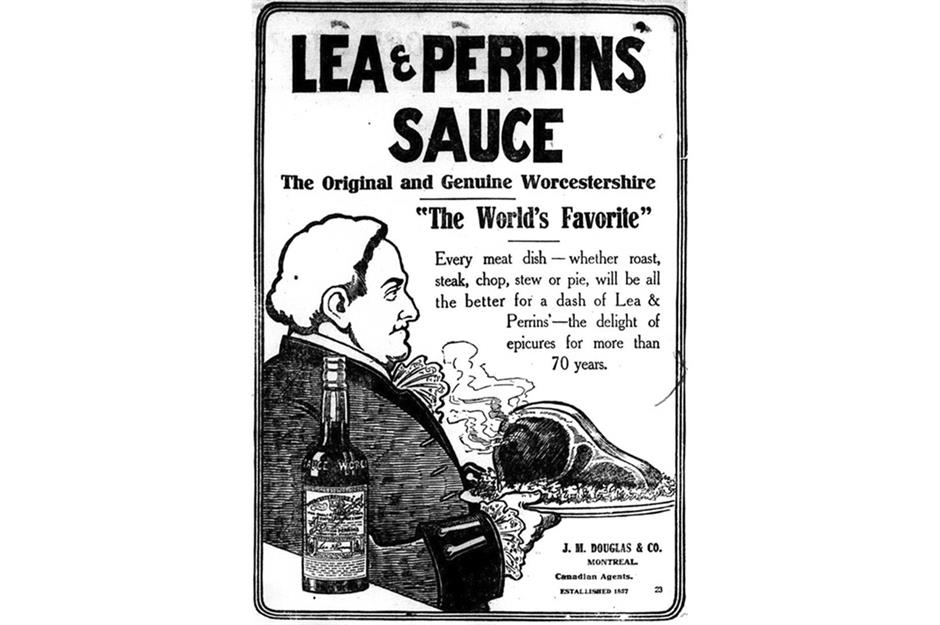
Drizzled over cheese on toast or used to marinate meat, Lea & Perrins Worcestershire Sauce is a staple in kitchen cupboards across the globe – but do you know how it was invented? The story goes that in 1837, chemists John Wheeley Lea and William Henry Perrins were tasked with recreating a recipe that nobleman Lordy Sandys had experienced in Bengal, India. At first, the product wasn’t to its makers’ tastes – but after it was forgotten about in a cellar for a year and a half, they found it had mellowed into a delicious sauce.
8. Crisps
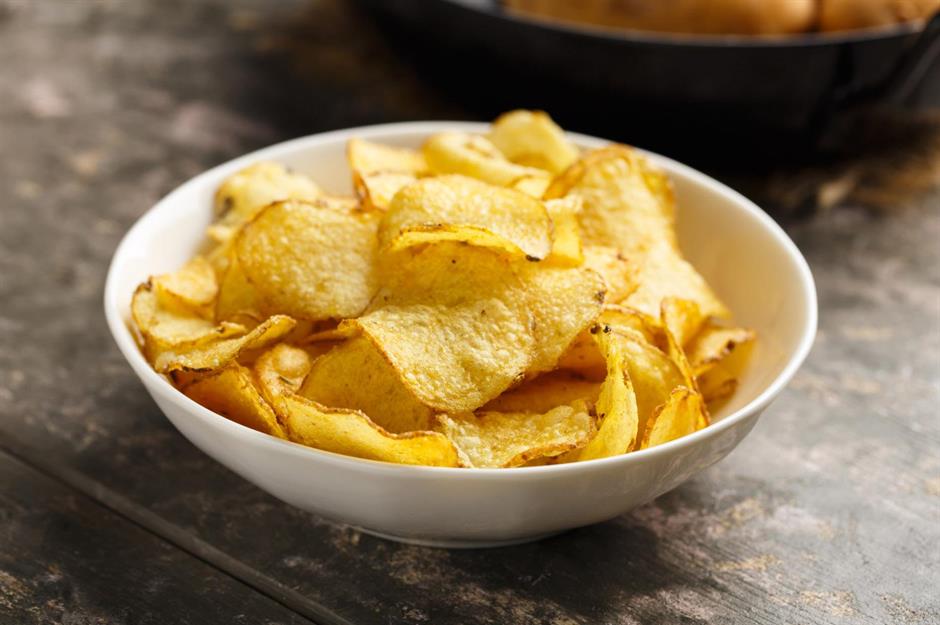
The tale of how this salty snack was invented is one of revenge. While dining at the Moon’s Lake House in Saratoga Springs, New York in 1853, Cornelius Vanderbilt sent his French fries back to the kitchen for being cut too thickly. In outrage, chef George Crum prepared them again – this time, as thin and hard as possible. Vanderbilt loved them, and the potato crisp was born. Although this origin story is sometimes contested, the restaurant is undoubtedly the place where the crunchy delight gained popularity.
7. Nashville hot chicken
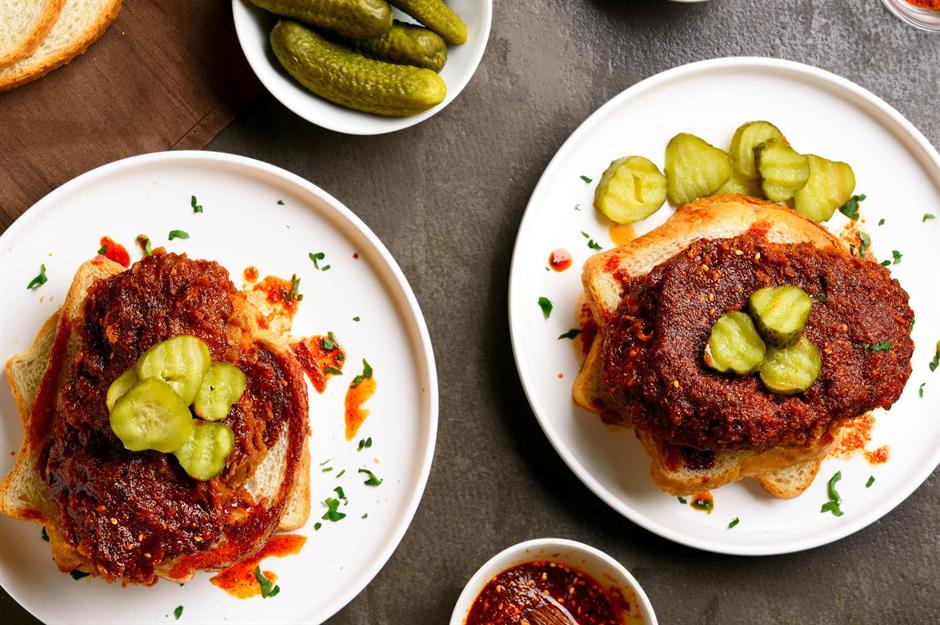
This seriously spicy chicken is a treat for those who like hot food, and a punishment for everyone else – and that's precisely why it was invented. In 1930s Nashville, Thornton Prince was caught cheating on his girlfriend. In an attempt to get revenge, she served him a breakfast of fried chicken doused in extremely hot pepper. Much to her dismay, the plan backfired, and Prince actually enjoyed the meal. He even went as far as opening a restaurant (now known as Prince's Hot Chicken Shack) to sell the fiery dish.
6. Chicharrones
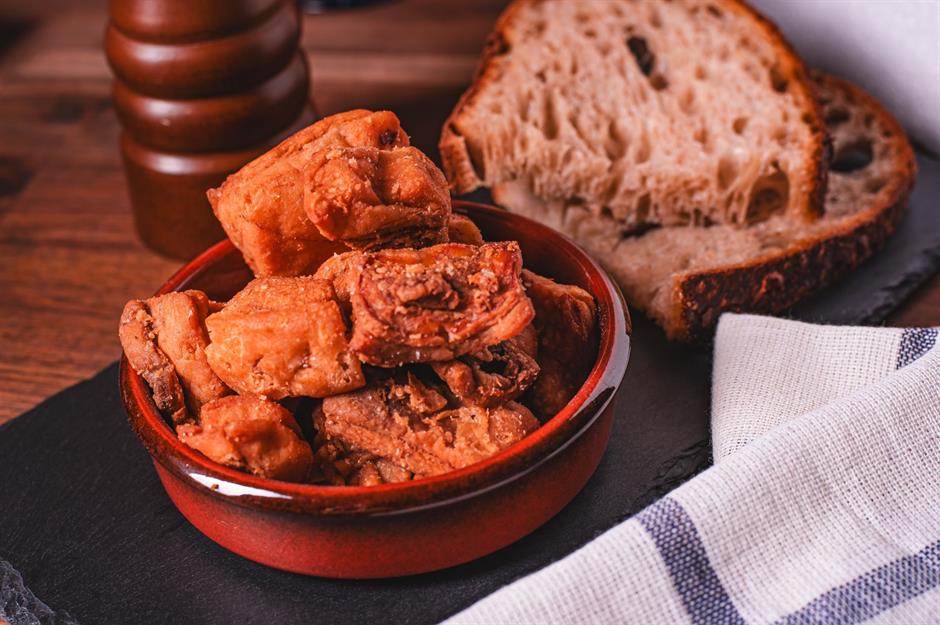
This fried pork snack is enjoyed across Spain and Latin America – and while its origins are debated, there's one almost unbelievable story we simply had to share. Legend has it that back in the 18th century, a Spanish farmer found that one of his hogs had rubbed its skin off while scratching its back on a tree. After baking in the sun, the skin gave off a smoky bacon scent. To the farmer’s delight, it tasted delicious, too.
5. Kellogg’s Corn Flakes
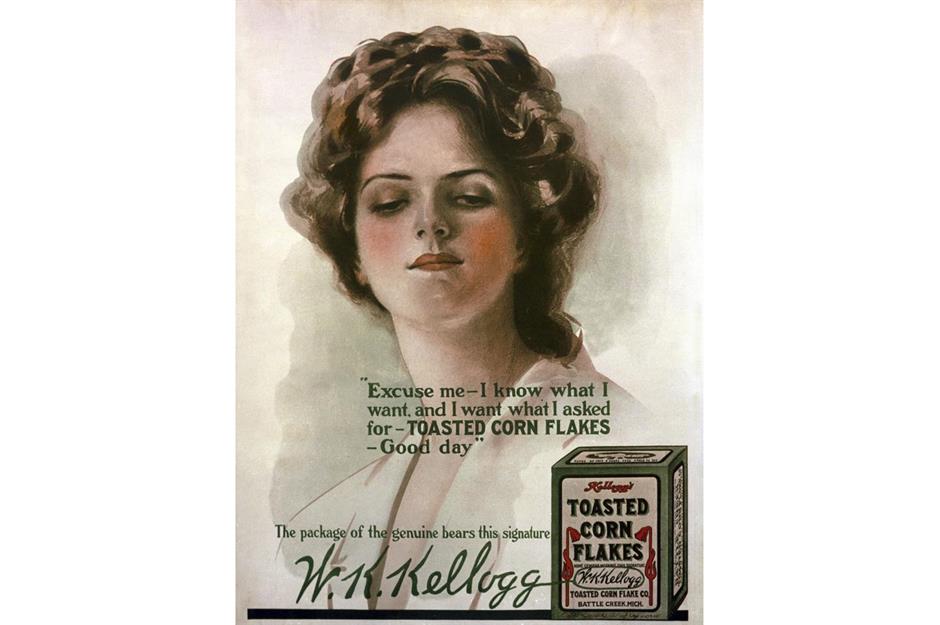
The invention of Kellogg's Corn Flakes was influenced by religion... and indigestion. A Seventh-day Adventist, the brand's founder, John Harvey Kellogg, and his brother, Will Keith Kellogg, intentionally made the cereal healthy, bland and easy to digest – unlike many breakfast foods at the time. The official history notes that Corn Flakes were invented in 1898 when the brothers failed to make granola. Instead, they accidentally flaked wheat berries and never looked back. The first batch went on sale to the general public in 1906.
4. Ice pop
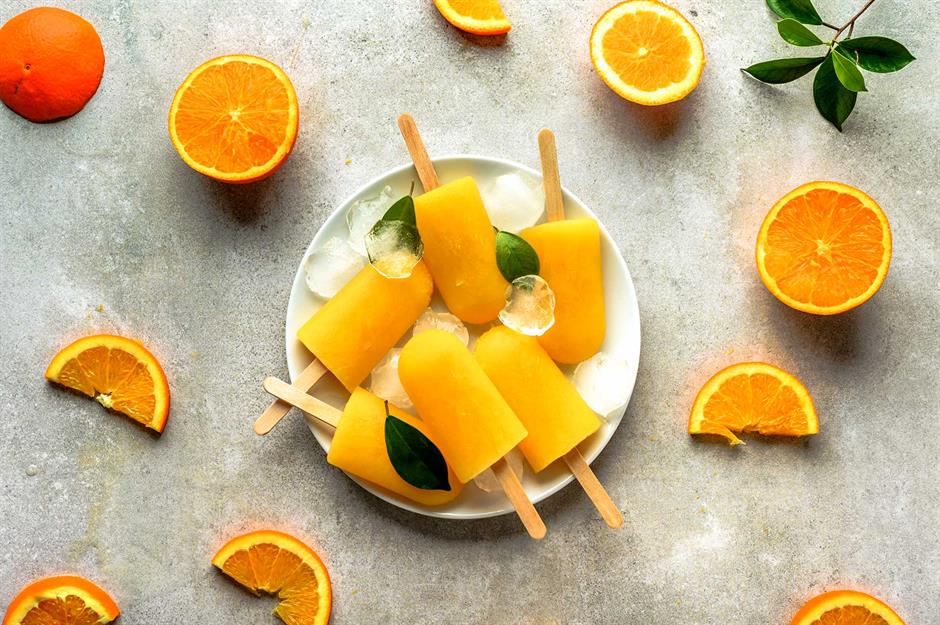
Fittingly, an 11-year-old boy invented the ice pop (or Popsicle, as it's more commonly known in the US). In San Francisco in 1905, young Frank Epperson accidentally left a soda, as well as the wooden stirrer he'd mixed it with, out in the cold overnight. When he returned to it in the morning, the soda had frozen – and the Popsicle was born. Fun fact: Epperson initially christened the product an Epsicle, a portmanteau of Epperson and icicle.
3. Coca-Cola
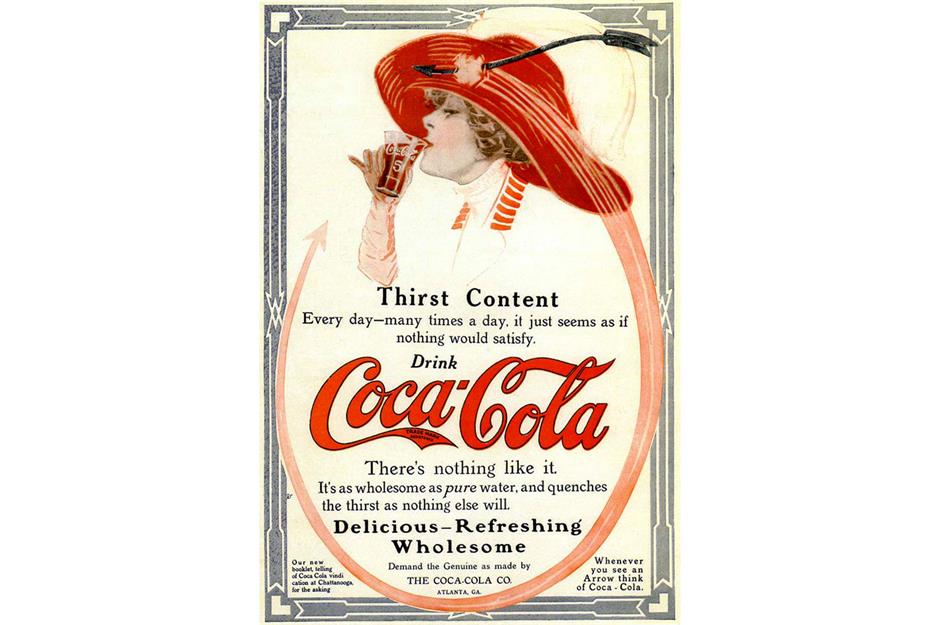
When pharmacist John Pemberton invented Coca-Cola in 1886, it was in syrup form and advertised as an antidote for headaches and exhaustion. One Coca-Cola advert from the 1890s even touted it as 'the ideal brain tonic'. Pemberton actually invented the non-alcoholic Coca-Cola syrup after his county introduced prohibition, outlawing a previous tonic he invented in 1885.
2. Cheese puffs
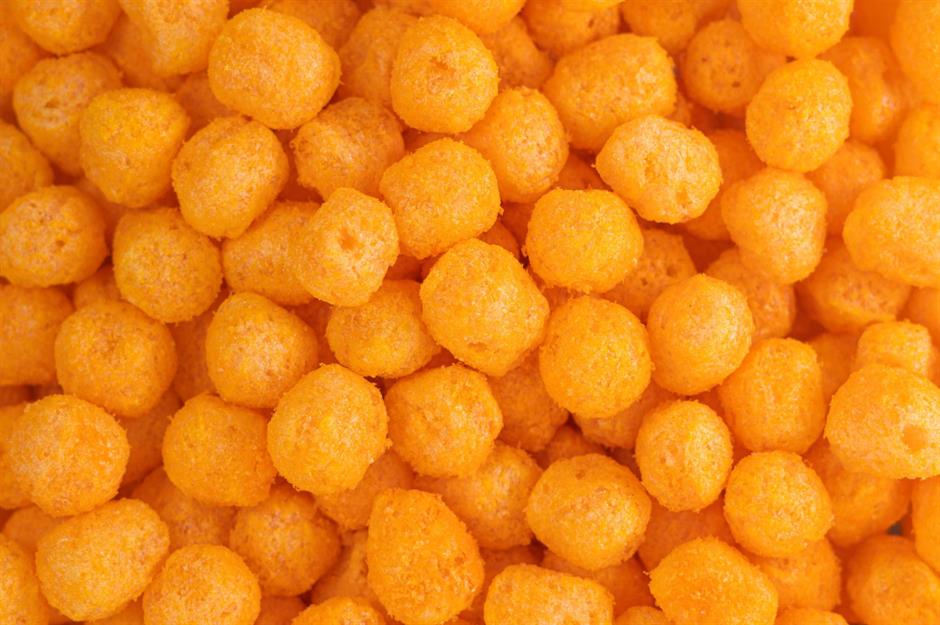
The first batch of cheese puffs is thought to have been invented in an animal feed factory in the 1930s. Workers at The Flakall Company of Beloit, Wisconsin had noticed that puffed corn was being produced during a machinery cleaning process. One employee, Edward Wilson, decided to investigate, taking home a handful of puffs and seasoning them – and he realised they tasted pretty good. The company moved into snack making, and a popular treat was born.
1. Sandwiches
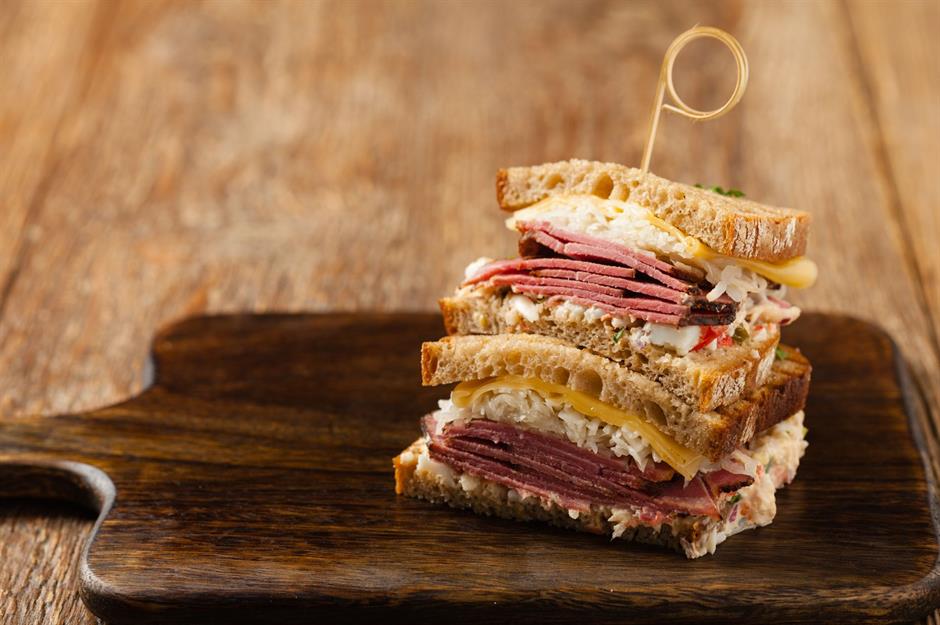
The sandwich, as it's known in the West, was supposedly invented as a way to eat meat without a knife, fork and plate. An 18th-century English nobleman, John Montagu, the fourth Earl of Sandwich, is often credited with making the dish famous. While playing a gambling game with friends, he asked for meat to be brought over between two pieces of bread. The meal caught on, with people saying, "I’ll have the same as Sandwich".
Now discover 34 common food 'facts' that simply aren't true
Last updated by Luke Paton.
Comments
Be the first to comment
Do you want to comment on this article? You need to be signed in for this feature